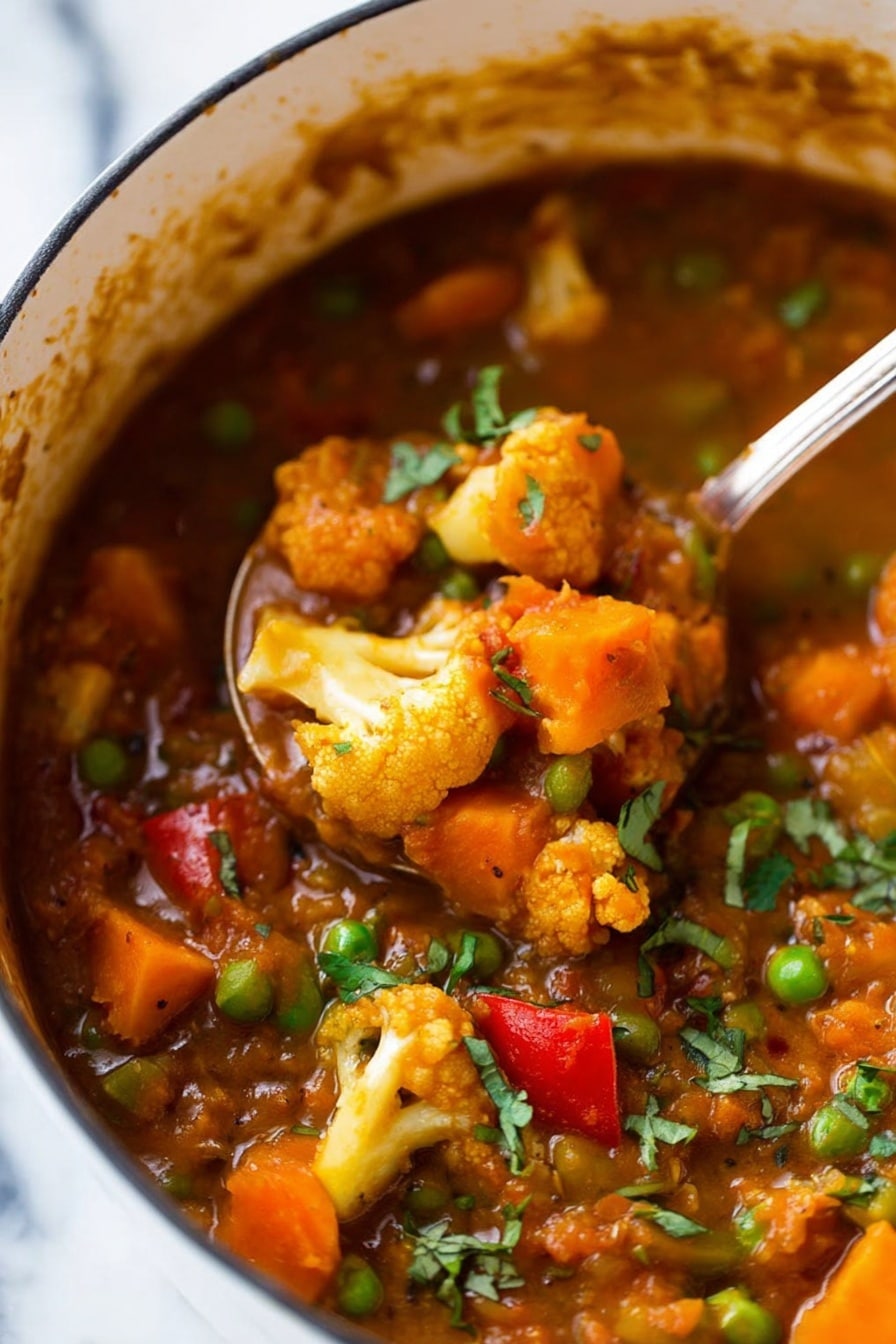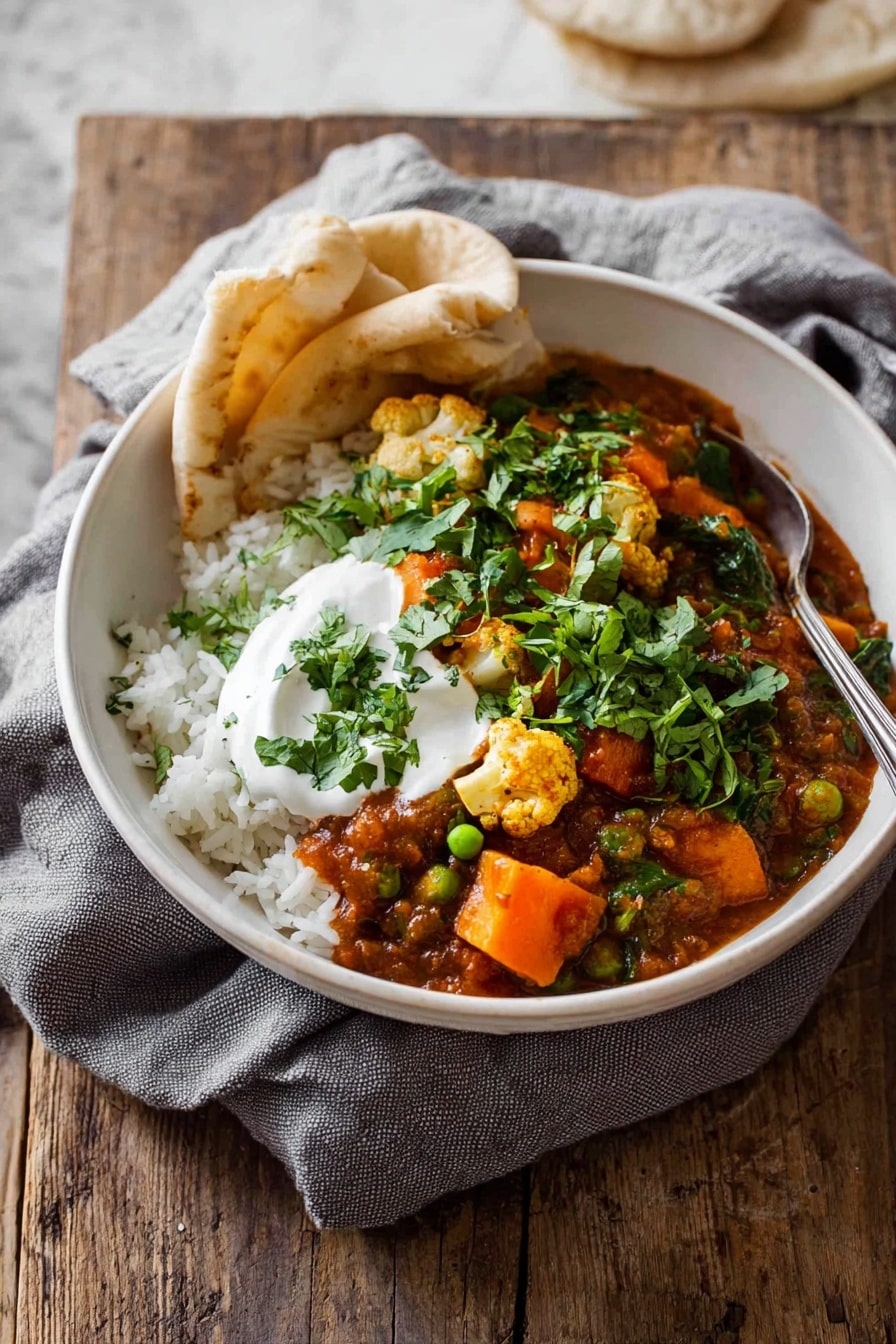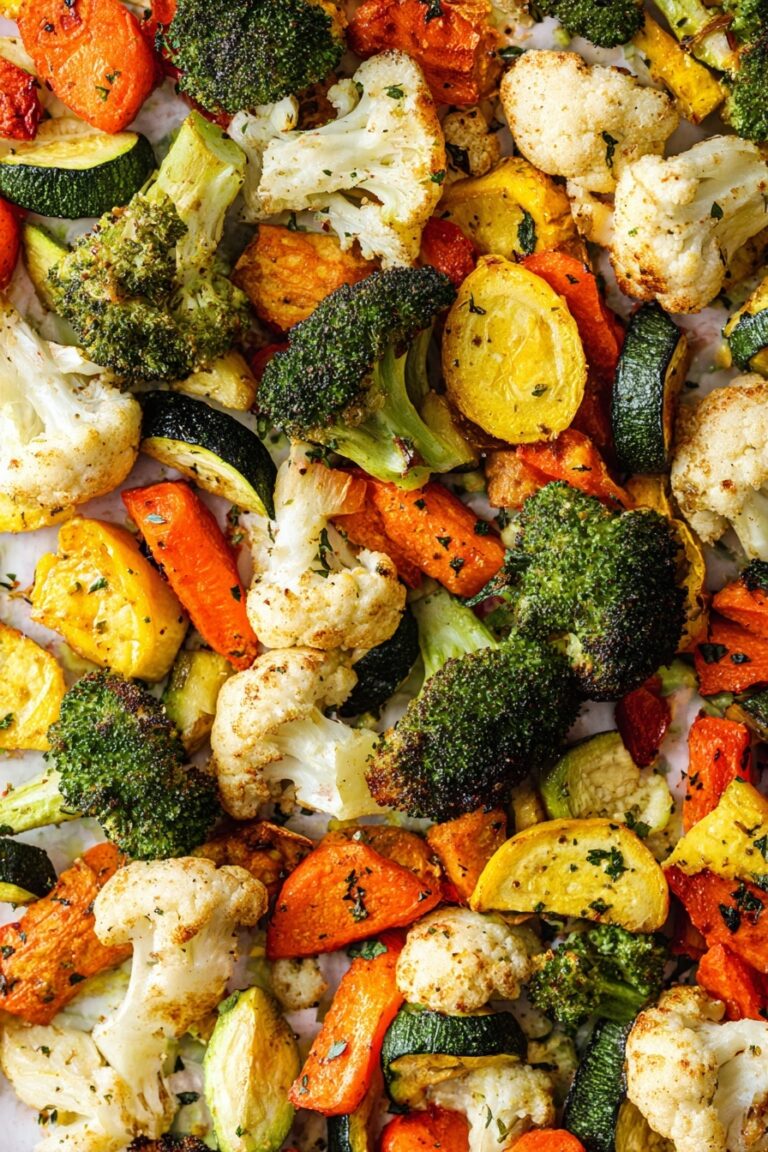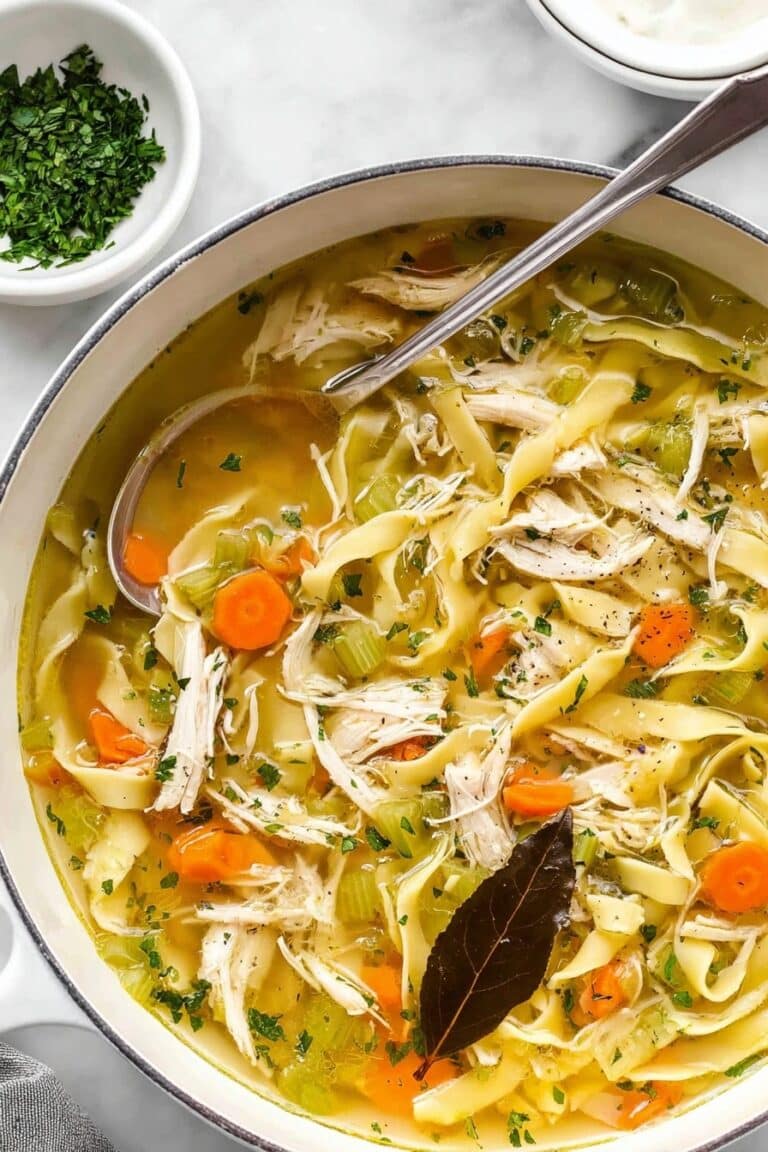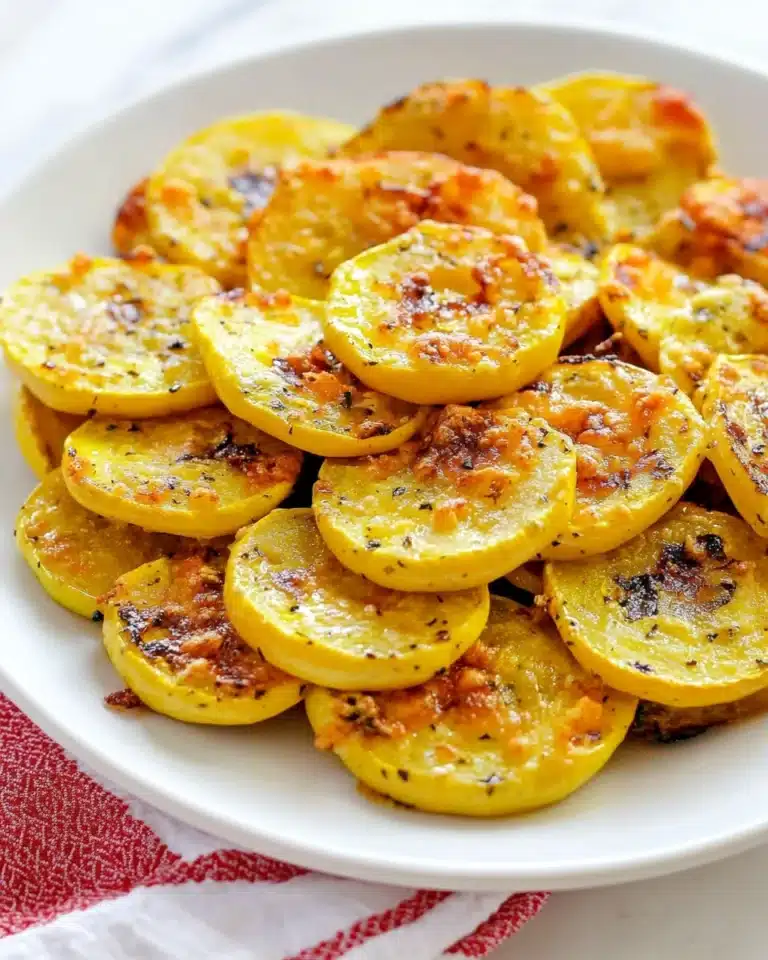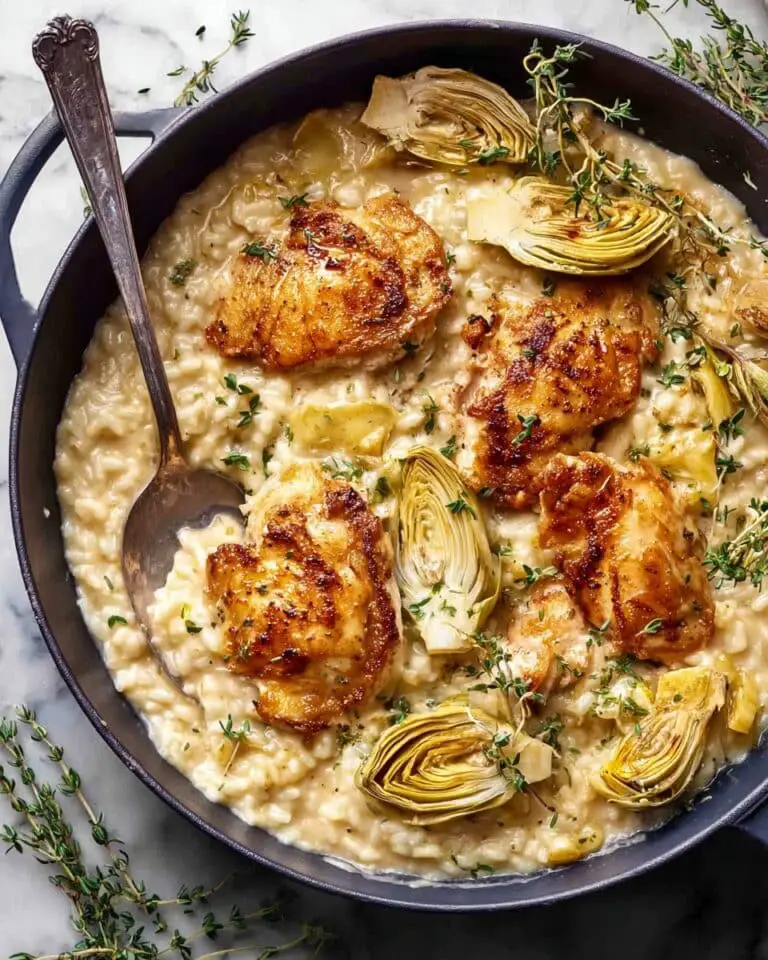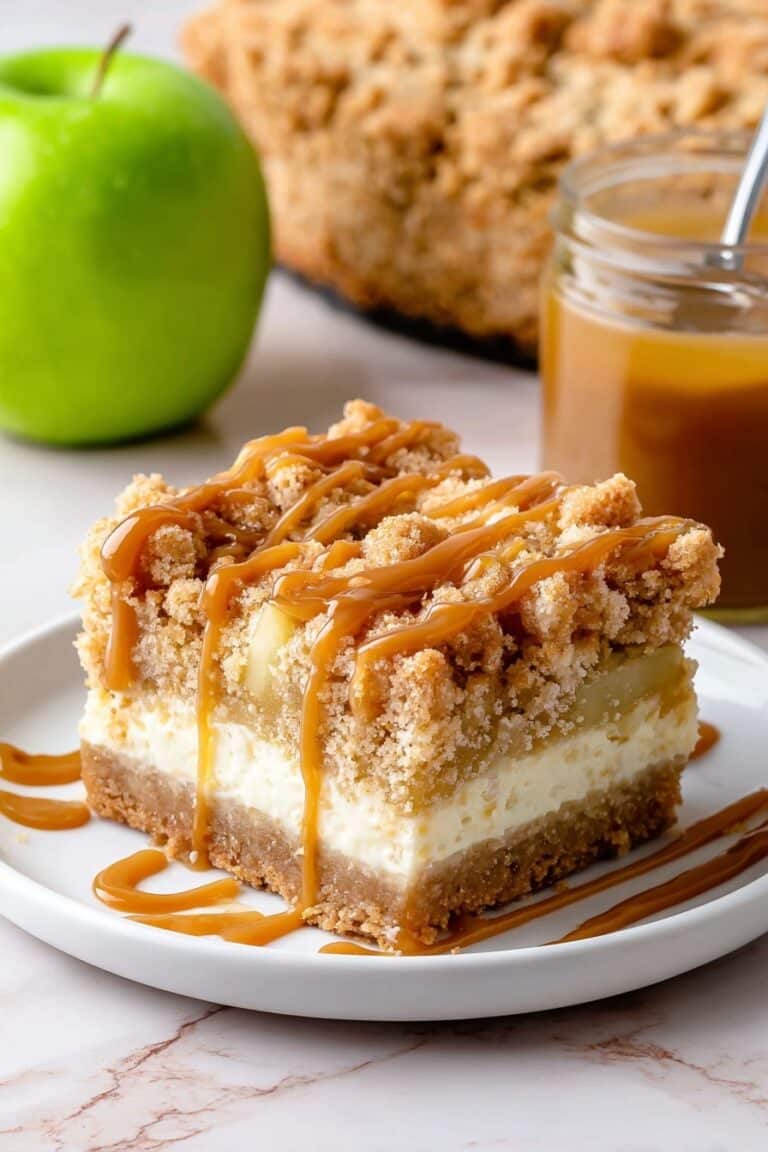If you’re craving something hearty, comforting, and full of warming spices, then this Vegetable Curry Recipe is going to become your new favorite. I remember the first time I made it—it filled my kitchen with the most inviting aromas, and every bite was packed with vibrant, fresh vegetables and just the right kick of spice. Whether you’re looking to impress friends, feed a crowd, or just treat yourself, you’ll find that this curry strikes the perfect balance between easy and utterly delicious. Stick with me, and let’s make this dish your go-to for cozy dinners.
Why You’ll Love This Recipe
- Simple and Versatile: You can adjust the veggies and spice level to match your taste and what’s in season.
- Velvety Texture: Cashew cream adds an indulgent richness without dairy, perfect for creamy comfort food.
- Family-Friendly: Leave out the green chili for kids, or ramp it up for spice lovers—everyone wins.
- Crowd-Pleaser: My family goes crazy for this curry when served hot with rice or warm naan.
Ingredients You’ll Need
Every ingredient here plays a part in layering flavors and textures that make this Vegetable Curry Recipe sing. I always aim for fresh, colorful vegetables, and having the spice mix handy really simplifies the cooking process—trust me, it’s a game changer!
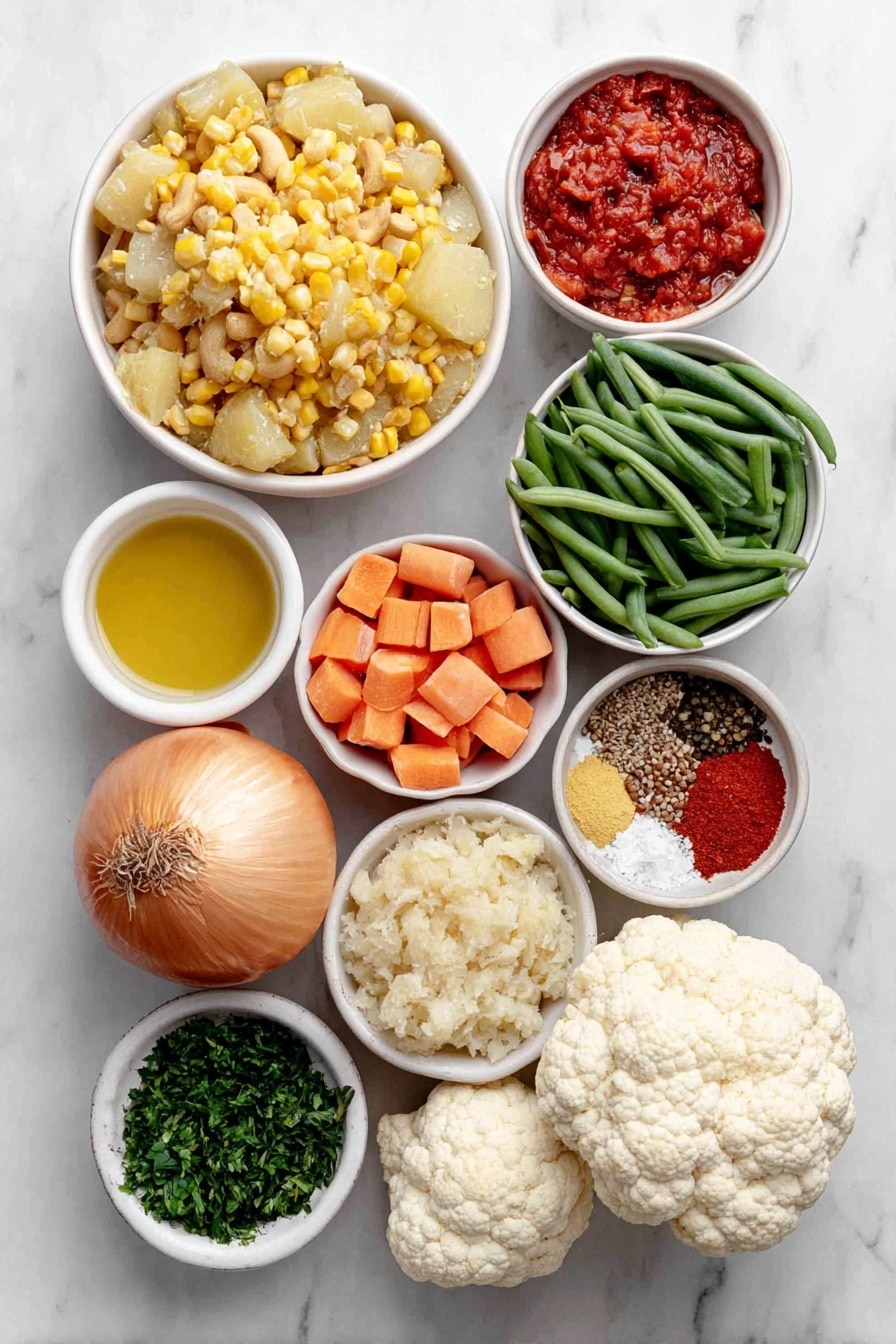
- Oil: Use a neutral or mild-flavored oil like vegetable or sunflower for perfect sautéing without overpowering flavors.
- Onion: Finely chopped onion forms a flavorful base; I like to cook it until it’s soft and just beginning to caramelize.
- Green chili: Slit or chopped if you want a mild heat, but leave out if cooking for kids or sensitive palates.
- Ginger garlic paste: If you don’t have a paste, freshly grated ginger and crushed garlic both work wonderfully for authentic flavor.
- Pureed tomatoes: I avoid overly tangy ones to keep the curry balanced; ripe and sweet tomatoes are best.
- Coriander leaves: Chopped fresh and thrown in at the end for a fragrant, herbal punch.
- Kasuri methi: Dried fenugreek leaves add a subtle earthiness I just adore—optional but worth trying.
- Hot water: Adjust the quantity to get your desired curry consistency—from saucy to thicker gravy.
- Cashews: Soaked and ground into a creamy base; you can substitute with coconut milk or nut butter if you prefer.
- Carrot, potatoes, green beans, peas, cauliflower, sweet corn: A vibrant veggie mix that brings sweetness, texture, and color—feel free to swap in your favorites.
- Spices: A warm blend of Kashmiri chili powder, garam masala, cumin, coriander, turmeric, salt, and cumin seeds create the classic Indian curry flavor profile.
- Whole spices: Cardamoms, cinnamon, bay leaf, or curry leaves make a welcoming aroma as they toast in the oil.
Variations
One of the things I love most about this Vegetable Curry Recipe is how easy it is to personalize based on your pantry or dietary needs. I often switch up the vegetables depending on the season or what I have on hand, and I’ve tailored the spice mix to be milder or bolder depending on who’s at the table.
- Vegetable swaps: I once swapped cauliflower with broccoli and loved the slightly different texture and taste—it’s totally your call.
- Dairy-free option: Using coconut milk instead of cashew cream makes the dish luscious and perfect for vegan diets.
- Protein boost: Adding chickpeas or tofu transforms it into a more filling meal without losing that comforting curry vibe.
- Mild versus spicy: Adjust the Kashmiri chili powder or omit the green chili for kids or sensitive eaters without sacrificing flavor.
How to Make Vegetable Curry Recipe
Step 1: Build Your Flavor Base
Heat your oil in a heavy-bottomed pan over medium heat, then add cumin seeds along with cardamoms, cinnamon, and bay leaf or curry leaves. Let them toast lightly until fragrant (about 30 seconds to a minute). Then toss in the finely chopped onion and cook, stirring often, until soft and golden. This step sets the stage for all the flavor, so take your time here and don’t rush it—once the onions turn golden, the whole dish elevates instantly.
Step 2: Stir in Aromatics and Tomatoes
Next, add the ginger garlic paste and green chili (if using). Sauté for about 2 minutes until the raw smell disappears, then pour in your pureed tomatoes. Cook this mixture on medium heat, stirring often, until the oil starts separating and you see the tomato base thickening. That’s the cue that your curry’s flavor is coming along nicely.
Step 3: Spice Things Up and Add Vegetables
Sprinkle in your dry spices—Kashmiri red chili powder, garam masala, cumin powder, coriander powder, turmeric, and salt. Stir well to coat the tomato mixture. Now add your chopped vegetables—carrot, potatoes, green beans, cauliflower, peas, and corn. Mix gently so the veggies get a nice spice coating.
Step 4: Add Cashew Cream and Simmer
Here’s where the magic happens: add your cashew cream (or coconut milk if you prefer) and then pour in hot water gradually to get your desired consistency. I usually start with about one and a quarter cups and add more if needed. Bring everything to a gentle simmer, cover, and let the vegetables cook through—usually about 15-20 minutes. Check in occasionally to stir and ensure nothing sticks to the bottom.
Step 5: Final Touches and Garnish
Once vegetables are tender and the curry has thickened to your liking, crush kasuri methi between your palms and sprinkle it over the curry along with fresh chopped coriander leaves. Stir gently and turn off the heat. Let the curry rest for a few minutes before serving to let all those flavors marry beautifully.
Pro Tips for Making Vegetable Curry Recipe
- Soak Cashews Properly: I soak my cashews in hot water for 15 minutes and blend until completely smooth—that creamy base makes a huge difference in mouthfeel.
- Don’t Skip Toasting Spices: Toasting whole spices in oil releases their essential oils and deepens your curry’s aroma and taste dramatically.
- Adjust Water Gradually: Add hot water little by little to control the curry’s thickness; this way you won’t end up with a watery or overly thick sauce.
- Cook Veggies Uniformly: Chop vegetables in similar-sized pieces for even cooking, and add harder vegetables like potatoes first so everything finishes at once.
How to Serve Vegetable Curry Recipe
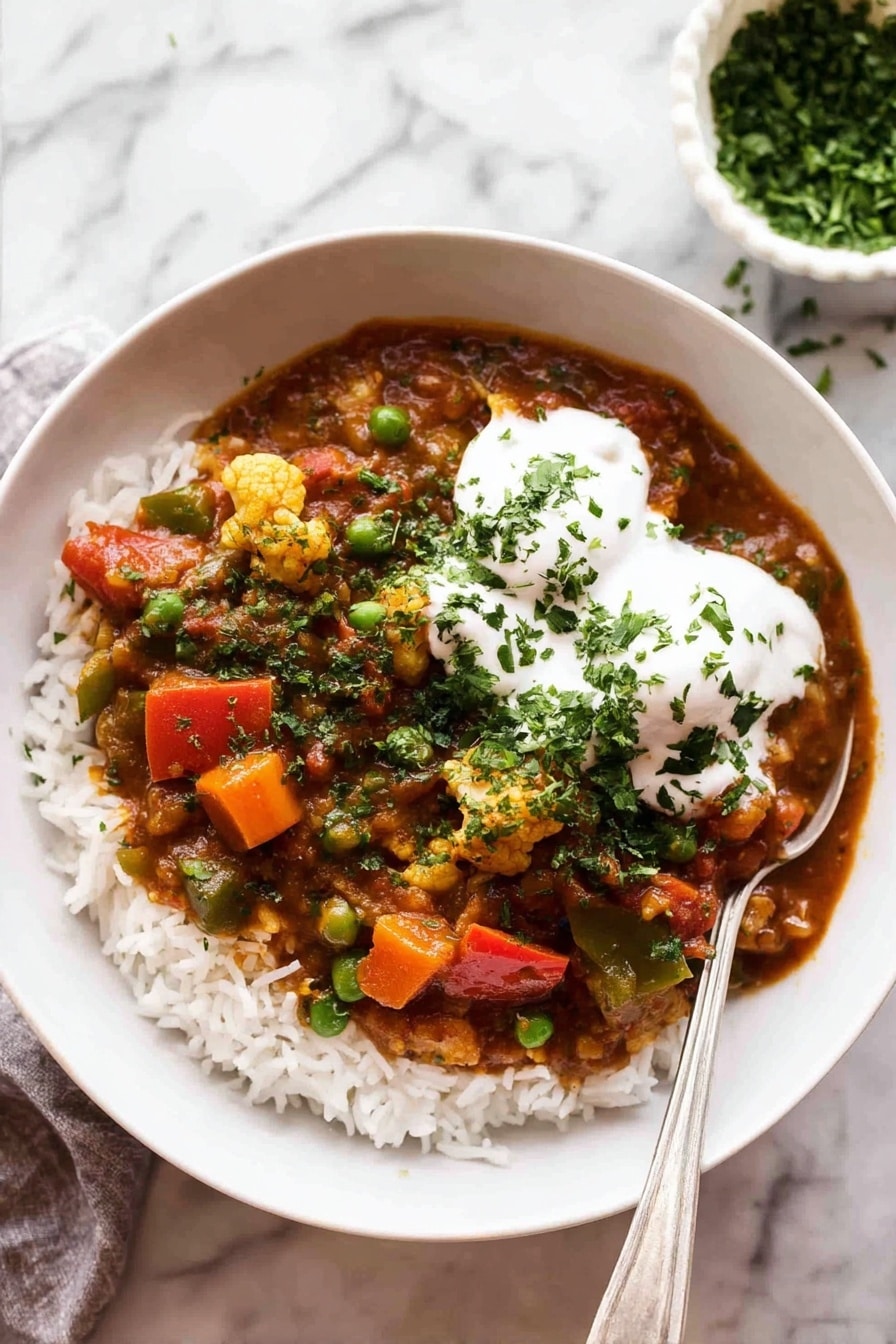
Garnishes
I always finish my vegetable curry with a generous sprinkle of freshly chopped coriander leaves. Sometimes I add a few toasted cashew halves on top for extra crunch and a drizzle of a squeeze of lime juice to brighten the flavors even more. These simple touches take your curry from good to unforgettable.
Side Dishes
This curry pairs beautifully with basmati rice for soaking up all that saucy goodness. I also love serving it with warm naan or soft chapati for dipping. For a fun twist, it’s great spooned over quinoa or alongside a simple cucumber raita to cool things down on hotter days.
Creative Ways to Present
For special occasions, I’ve plated this curry in shallow bowls topped with a swirl of coconut cream and a sprinkle of pomegranate seeds—they add a surprising burst of color and flavor. Serving it family-style with a big platter of assorted breads and chutneys always makes it feel festive and inviting.
Make Ahead and Storage
Storing Leftovers
I typically let the curry cool completely before transferring it to an airtight container in the fridge. It keeps well for about 3-4 days, and the flavors actually deepen overnight. Reheat gently on the stove with a splash of water if it thickens too much.
Freezing
Vegetable curry freezes wonderfully, which is perfect for batch cooking. I portion it out into freezer-safe containers and label them—when you’re ready to enjoy, thaw overnight in the fridge and reheat on the stove. Just add a little extra liquid if needed, as the curry may thicken during freezing.
Reheating
When reheating, I like to use a low to medium heat on the stove to warm it through slowly and stir often. This helps preserve the creaminess and prevents the curry from sticking or burning. Microwave works too for convenience—just pop it in for 1-2 minutes, stirring halfway through.
FAQs
-
Can I make this Vegetable Curry Recipe vegan?
Absolutely! This recipe is naturally vegan if you use oil instead of ghee and substitute the cashew cream with coconut milk or another plant-based cream. Just double-check your spices and paste ingredients to keep everything vegan-friendly.
-
What vegetables work best in this curry?
This curry is super forgiving with vegetables—you can use whatever you have on hand. I suggest a mix of root veggies like potatoes and carrots with green beans, peas, and cauliflower for a nice variety of textures and colors.
-
How spicy is this curry, and can I adjust it?
It has a mild to medium heat level thanks to Kashmiri chili powder and optional green chili. You can easily leave out the chili for a kid-friendly version or add extra chili powder if you love heat. The beauty is in the flexibility!
-
Do I need to soak and grind cashews every time?
Soaking the cashews helps achieve that rich, velvety curry base, but if you’re in a hurry, you can use store-bought cashew cream or coconut milk. Just make sure your creamy element is well blended and smooth for the best consistency.
Final Thoughts
This Vegetable Curry Recipe holds a special place in my kitchen rotation because it’s so reliable and endlessly adaptable. Each time I make it, I remember how comforting it felt to find the perfect balance of spices and veggies all in one bowl. I really hope you give it a try and make it your own—because nothing beats the cozy feeling of a homemade curry shared with family or friends. Trust me, you’ll be coming back to this recipe again and again.
Print
Vegetable Curry Recipe
- Prep Time: 15 minutes
- Cook Time: 25 minutes
- Total Time: 40 minutes
- Yield: 4 to 5 servings
- Category: Main Course
- Method: Stovetop
- Cuisine: Indian
Description
A flavorful and easy-to-make Indian-style vegetable curry featuring mixed vegetables simmered in a spiced tomato and cashew cream sauce. This dish is perfect for a comforting meal served alongside rice, roti, naan, or bread.
Ingredients
Vegetables
- ¾ to 1 cup carrot (peeled, chopped, 1 medium)
- ¾ to 1 cup potatoes (peeled, chopped, 1 medium)
- ½ cup green beans (chopped or French beans)
- ½ to ¾ cup fresh or frozen peas
- 1½ cups cauliflower florets (substitute with peas, potatoes & carrots)
- ¼ cup sweet corn kernels (optional)
Spices and Seasonings
- ¾ to 1¼ teaspoon Kashmiri red chili powder (adjust to taste, leave out for kids)
- 1 teaspoon garam masala
- 1 teaspoon cumin powder (omit to use curry powder)
- 1 to 1½ teaspoon coriander powder (omit to use curry powder)
- ⅛ teaspoon turmeric (omit to use curry powder)
- 1 teaspoon salt (adjust to taste)
- ½ teaspoon cumin seeds
- 3 cardamoms
- 1 inch cinnamon stick
- 1 bay leaf or 1 sprig curry leaves
- 1 tablespoon kasuri methi (optional, dried fenugreek)
Other Ingredients
- 2 to 3 tablespoons oil
- 1 cup (1 large) onion (very finely chopped)
- 1 green chili (slit or chopped; optional, leave out for kids)
- 1 tablespoon ginger garlic paste (or 1 tablespoon each grated or crushed)
- 1 cup (3 medium) pureed tomatoes (or finely chopped; avoid tangy tomatoes)
- 1¼ to 2 cups hot water (use as required)
- 20 cashews (or ½ cup thick coconut milk or 1½ tablespoon nut butter, see notes)
- 2 to 4 tablespoons coriander leaves (chopped to garnish)
Instructions
- Prepare Cashew Cream: If using cashews, soak them in half a cup of hot water for 15 minutes. Then grind the soaked cashews along with the water to form a smooth puree. Add more water if needed to achieve a creamy consistency. Skip this step if using coconut milk or nut butter.
- Heat Oil and Temper Spices: In a pan, heat 2 to 3 tablespoons of oil over medium heat. Add cumin seeds, cardamoms, cinnamon stick, and bay leaf or curry leaves. Sauté until aromatic.
- Sauté Aromatics: Add finely chopped onions and optional green chili to the pan. Cook until onions are translucent and slightly golden. Then add ginger garlic paste and sauté for a minute until fragrant.
- Add Tomatoes and Spices: Stir in the pureed or finely chopped tomatoes. Cook the mixture until the oil starts to separate from the masala. Add Kashmiri red chili powder, garam masala, cumin powder, coriander powder, turmeric, and salt. Mix well and cook for another 2–3 minutes.
- Add Vegetables and Simmer: Add chopped carrots, potatoes, green beans, peas, cauliflower florets, and optional sweet corn kernels to the pan. Mix well to coat the vegetables with the spice mixture.
- Add Cashew Cream and Water: Pour in the prepared cashew cream (or coconut milk/nut butter) along with hot water (1¼ to 2 cups, adjust as needed) to form a curry gravy. Stir everything to combine.
- Cook Until Vegetables Are Tender: Cover the pan and let the curry simmer on medium-low heat for about 20 minutes or until the vegetables are cooked through and tender. Stir occasionally and add more water if the curry becomes too thick.
- Finish with Kasuri Methi and Garnish: Sprinkle kasuri methi (if using) and chopped coriander leaves over the curry. Give it a gentle stir and cook for another minute before turning off the heat.
- Serve: Serve the vegetable curry hot with steamed rice, roti, naan, or bread of your choice for a satisfying meal.
Notes
- This simple vegetable curry uses a mix of fresh vegetables and fragrant spices for an authentic Indian flavor.
- You can substitute cashew cream with thick coconut milk or nut butter for a dairy-free option.
- Adjust the chili powder and green chili based on your preferred spice level, especially for kids.
- Serve with rice, roti, naan, or any Indian bread for a complete and hearty meal.
- Kasuri methi adds a unique aroma and flavor but is optional.
Nutrition
- Serving Size: 1 serving
- Calories: 179 kcal
- Sugar: 10 g
- Sodium: 711 mg
- Fat: 8 g
- Saturated Fat: 1 g
- Unsaturated Fat: 7 g
- Trans Fat: 0.03 g
- Carbohydrates: 24 g
- Fiber: 6 g
- Protein: 5 g
- Cholesterol: 0 mg

